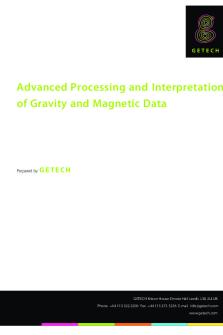Processing PDF

| Title | Processing |
|---|---|
| Course | Managerial Accounting |
| Institution | Gonzaga University |
| Pages | 3 |
| File Size | 83 KB |
| File Type | |
| Total Downloads | 73 |
| Total Views | 173 |
Summary
Processing...
Description
Job order costing and process costing are two common methods for determining unit product costs. As explained in previous chapters, job order costing is used when many different jobs or products are worked on each period. Examples of industries that use job order costing include furniture manufacturing, special order printing, shipbuilding and many types of service organizations. By contrast, process costing is used most commonly in industries that convert raw materials into homogenous (i.e uniform) products, such as bricks, soda or paper on a continuous basis. In addition, process costing is sometimes used in companies with assembly operations. A form of process costing may also be used in utilities that produce gas, water and electricity. Our process in this chapter is to explain how product costing works in a process costing system. COMPARISON OF JOB ORDER AND PROCESS COSTING: In some ways process costing is very similar to job order costing, and in some ways it is very different. In this section we focus on these similarities and differences to provide a foundation for the detailed discussion of process costing that follows. SIMILARITIES BETWEEN JOB ORDER AND PROCESS COSTING: The similarities between job order and process costing are as follows: 1. Both systems have the same basic purposes- to assign material, labor and manufacturing overhead costs to products and to provide a mechanism for computing unit product costs. 2. Both systems use the same basic manufacturing accounts, including manufacturing overhead, raw materials, work in process and finished goods. 3. The flow of costs through the manufacturing accounts is basically the same in both systems. As can be seen from this comparison, much of what you have already learned about costing is applicable to a process costing system. Our task now is refine and extend your knowledge to process costing. DIFFERENCES BETWEEN JOB ORDER AND PROCESS COSTING: Exhibit 4-1 summarizes three differences between job order and process costing.
FIrst job order costing is used when a company produces many different jobs that have unique production requirements. Process costing is used when a company produces a continuous flow of units that are indistinguishable from one another. Second job order costing uses job cost sheets to accumulate costs for individual jobs. Process costing accumulates costs by department (rather than by job) and assign these costs uniformly to all identical units that pass through the department during a period. Third, job order costing uses job cost sheets to compute units costs for each job. Process costing systems compute unit costs by department. EXHIBIT 4-1 Differences between job order and process costing: 1. Job order costing a. Many different jobs are worked on during each period, with each job having unique production requirements b. Costs are accumulated by individual job c. Unit costs are computed by job on the job cost sheet 2. Process costing a. A single product is produced either on a continuous basis for long periods of time. All units of production are identical. b. Costs are accumulated by department. c. Unit costs are computed by department. COST FLOWS IN PROCESS COSTING: Before going through a detailed example of process costing, it will be helpful to see how, in a general way, manufacturing costs flow through a process costing system. PROCESSING DEPARTMENTS: A processing department is an organizational un where work is performed on a product and where materials, labor or overhead costs are added to the product. Some products and services may go through a number of processing departments, while others may go through only one or two. Regardless of the number of processing departments, they all have essential features.
First the activity in the processing department is performed uniformly on all of the units passing through it. Second, the output of the processing department is homogenous; in other words all of the units produced are identical. EXHIBIT 4-2 sequential processing departments: Basic raw material inputs -> processing department ->partially completed goods -> processing department-> partially completed goods-> processing department-> finished goods...
Similar Free PDFs

Processing
- 3 Pages

Image processing
- 38 Pages

Tissue processing
- 6 Pages

Food processing
- 4 Pages

Information Processing
- 3 Pages

Batch processing
- 4 Pages

Survival processing - Tutorial
- 5 Pages

Case Processing Summary
- 3 Pages

Introduction to Word Processing
- 5 Pages

Processing Recording Example
- 11 Pages
![Parallel Processing[1]](https://pdfedu.com/img/crop/172x258/z4xp2vpo4y7l.jpg)
Parallel Processing[1]
- 16 Pages

Median Filter (image processing)
- 9 Pages

Digital Signal Processing
- 164 Pages

Transaction Processing Systems
- 31 Pages
Popular Institutions
- Tinajero National High School - Annex
- Politeknik Caltex Riau
- Yokohama City University
- SGT University
- University of Al-Qadisiyah
- Divine Word College of Vigan
- Techniek College Rotterdam
- Universidade de Santiago
- Universiti Teknologi MARA Cawangan Johor Kampus Pasir Gudang
- Poltekkes Kemenkes Yogyakarta
- Baguio City National High School
- Colegio san marcos
- preparatoria uno
- Centro de Bachillerato Tecnológico Industrial y de Servicios No. 107
- Dalian Maritime University
- Quang Trung Secondary School
- Colegio Tecnológico en Informática
- Corporación Regional de Educación Superior
- Grupo CEDVA
- Dar Al Uloom University
- Centro de Estudios Preuniversitarios de la Universidad Nacional de Ingeniería
- 上智大学
- Aakash International School, Nuna Majara
- San Felipe Neri Catholic School
- Kang Chiao International School - New Taipei City
- Misamis Occidental National High School
- Institución Educativa Escuela Normal Juan Ladrilleros
- Kolehiyo ng Pantukan
- Batanes State College
- Instituto Continental
- Sekolah Menengah Kejuruan Kesehatan Kaltara (Tarakan)
- Colegio de La Inmaculada Concepcion - Cebu

